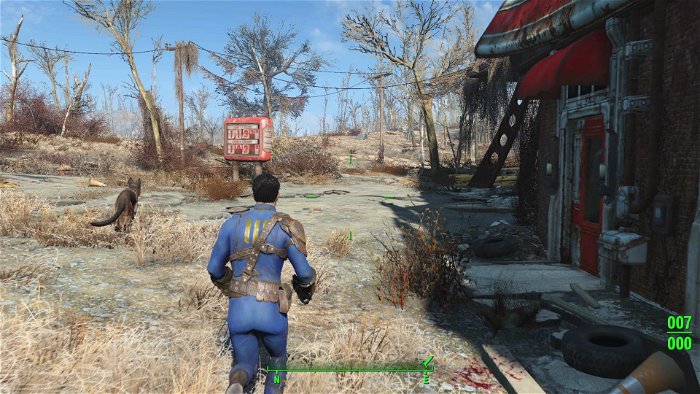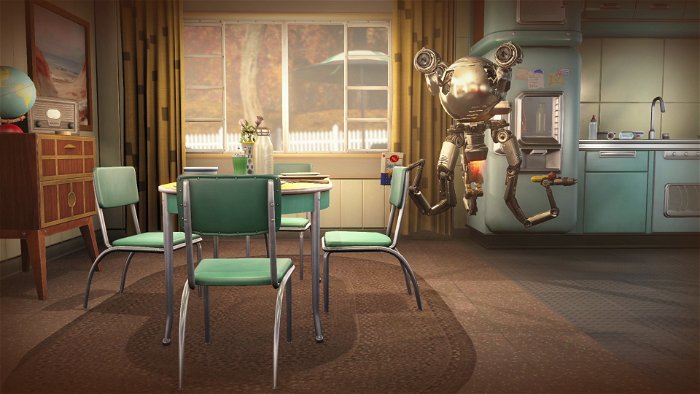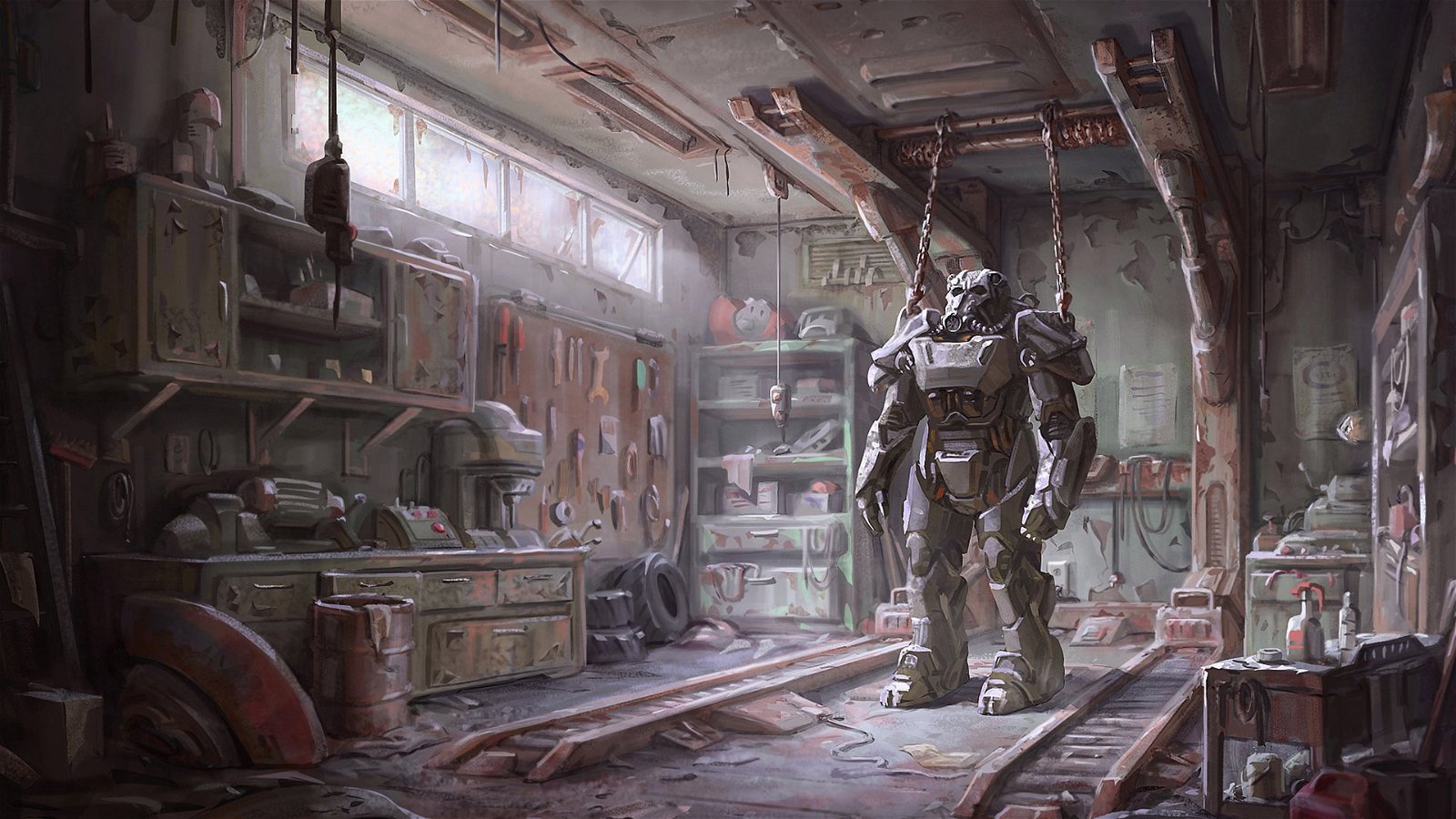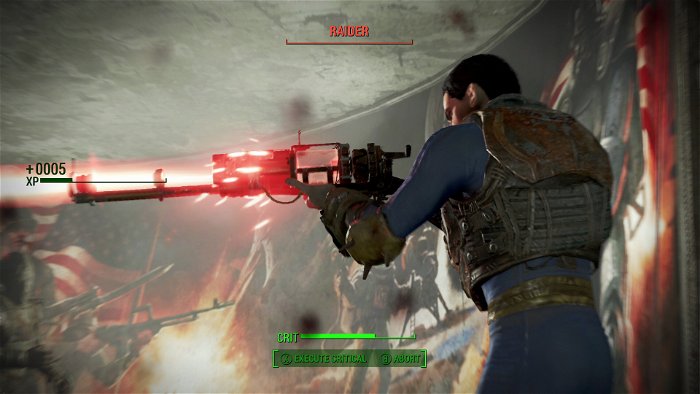Growing up a Nintendo boy, I never paid much attention to anything that went onto PC, and my knowledge of PC gaming began and ended with Starcraft. As I got older and gave myself the luxury of having more than one console, I began to discover new and amazing games, many of which were spin-offs of PC games. I’ll never forget the night my brother brought home Fallout 3; I had no idea what it was, or the lineage it had, but my brother told me it was like a post-apocalyptic Oblivion and I was sold.
On the surface, its connection to Oblivion was enough to make me like it, but it was so much more. It was darker, grittier, a lot more challenging, and actually had a pretty good sense of humour not really found in the Elder Scrolls games. It took up a pretty huge chunk of my life, and might have been the only game I played that year, had Afro Samurai not come out a few months later.
It’s been five years since a Fallout game has released (although for me it’s been seven, since I didn’t much care for New Vegas), and I think it’s safe to say that everyone has been aboard the hype train since it left the station at E3. Was the ride worth it? For the most part, yes. Fallout 4, while not perfect, does a serviceable job giving players what they want while adding enough that’s new to make it a fresh entry into the series.
We all saw the trailer at E3 so we all know how Fallout 4 starts, but just in case you missed it, let me clue you in. You play as a man (or woman) living in the idyllic Boston countryside just before the bombs hit and the world is plunged into a post-apocalyptic playground. You, your husband (or wife) and infant son Shaun are conveniently rushed into a Vault; however, all is not as it seems when you’re placed inside a “decontamination tank” that ends up being a cryogenic freezing tank. You’re then frozen for two hundred years, thawed briefly to see your husband murdered and your son kidnapped. You’re re-frozen, but a malfunction sets you free and you are able to get to the bottom of the mystery of who killed your husband and stole your son.
As far as a story goes, it’s not a half-bad justification for the events of the game, although I couldn’t help but feel that it runs counter to the game itself. Rescuing your infant son is something that, theoretically, should require a great deal of urgency, however the game is constantly presenting you with distractions in the form of quests, buildings to explore and loot, people to help, and so on. I couldn’t help but laugh at the idea that you’d get to your son in his 20’s because you had to stop at every building you could get in to, just to see if there were any spare Nuka-Cola bottles knocking around.
The core of Fallout 3/NV’s gameplay remains intact in Fallout 4 and veteran players may get misty-eyed for that old, familiar feeling. Bethesda really runs the gamut for the first-person RPGs and it’s really hard to improve on an almost perfect system. However, that isn’t to say that they haven’t made a few tweaks to tighten up some of the gameplay. Shooting controls feel better than ever; and where I found in Fallout 3/NV combat was almost dependent on V.A.T.S, in Fallout 4 I’ve barely used it. V.A.T.S itself has seen a minor change. Whereas in the last two Fallouts, V.A.T.S would pause the game, allowing you to make crucial decisions to how to eliminate your enemy, Fallout 4’s V.A.T.S merely slows down the combat, and indecision can result in taking damage from enemies who were faster than you.
The looting system has been tweaked and is now a little more convenient. Rather than the Fallout 3 or Skyrim method of searching every individual chest or dead body for goods, now simply looking at the object in question will bring up a menu showing you all lootable items. While Fallout was always good at letting you know which items were empty, this cutting of the middle man makes for much faster and fluid looting.
The radiation system has changed, and while I’m not particularly fond of it, it does make a lot of sense. Unlike previous Fallout games, where building up radiation started giving you different degrees of radiation sickness that lowered your overall health and strength, now each point of radiation takes one point off your max health. I found this to be a little more tedious as you’re constantly besieged by radiation with little to no wiggle room to play around it; however, this does make radiation (a crucial element in the Fallout universe) a lot more harrowing than ever before. Now radiation poses a real threat as it’s affecting you in-the-moment and it can make some crawls through ghoul-infested territory particularly frightening.
The biggest change Fallout 4 has is the merging of the Skill and Perk system into one easy to navigate system. Upon creating a character, players will allocate points into their S.P.E.C.I.A.L areas. Those points will unlock up to ten tiers of perks which players can unlock upon leveling. If you don’t have enough points to open a tier, you can use a perk point to add a point to your base S.P.E.C.I.A.L. I have mixed feelings about this. On the one hand, I like that they’ve made a system that’s easy to approach and gives you a level of control over your character that I’ve often longed for in my previous Fallout ventures. On the other, it does eliminate some of the difficulty and streamlines the progression allowing for less intricate character growth—considering some perks are required for crafting.
Let’s talk about the crafting. The much touted feature received some mixed reactions, many criticizing it for being something the mod community had cooked up years ago, and others (myself included) thought it might be an interesting avenue to explore. Having spent some time with it, I can say it’s not worth the time or effort. Crafting buildings is tedious and it isn’t helped by the entire interface being in the first-person perspective. The button control, for the console version, runs completely counter to years of gaming, X being the select option for the menus, unless you’re looking at something, and if you’re inside a structure you will be looking at the walls, wherein it becomes the pick-up button. Circle functions the same, naturally in-game and in the menu, circle is back. However, if you’re looking at something it becomes the “store” button. This becomes incredibly tedious once you’re inside a structure trying to construct it, or add furniture to it.
Gun crafting is a little more worthwhile as there are quite a substantial amount of modifications you can put onto guns. However, this too is marred by the fact that not only do most higher-end mods need specific perks to create, but a lot of the gun mods are pretty similar and there isn’t the “room for creation” that you might think there is. Not only that, but there’s no short supply of modded weapons to be found in the wasteland. I’ve definitely spent most of my time at the Armour Crafting table as adding arm, leg, chest, and head armour can give you a serious edge in battle. While traditional “full-armour” sets can be found, I’ve found it a much better trade-off for weaker armour that can have these add-ons applied to them.
However, modding isn’t just restricted to guns. One of the weird things I found about the game—although it was certainly cool when it happened—was how quickly you get a suit of Power Armour. Seriously, it’s the first mission. Remember how long it took to get it in previous games? Power Armour makes you stronger, gives you Rad resistance, and negates all fall damage (although it really takes some serious distance to take damage in this game). However, as part of the crafting system, this suit of Power Armour is basically level 1 and players can add new pieces as well as mod the pieces.
Gone from Fallout 4 is the titular Karma system that gave players points towards good or bad Karma for their respective deeds. While some may argue that the Karma system did relatively little in previous games, I felt it added a little flare that gave people interesting and unique options in gameplay. Fallout 4 feels like you can only play it one way now and it’s not yours; it’s theirs. Perhaps this was a proper choice considering you’re a parent on the hunt for their missing child, and it wouldn’t be right to make them an evil prick who recalibrates a religious ghoul-filled rocket ship so that it careens into a mountainside.
I’m conflicted on the Commonwealth and how Boston feels as a world in Fallout 4. Several people have been criticizing the supposed “11 minutes it takes to cross the wasteland” and I must say, I was a bit overwhelmed when I went from one side of the map to the other in what felt like a few minutes. The thing is, the Commonwealth is FILLED with stuff. Honestly, you can’t walk for two seconds without finding a landmark. So while, yes, the world does feel a lot smaller, there really is a ton to do, and you’ll find yourself exploring for hours upon hours.
Fallout 4 looks…well, alright. Playing the PS4 version, it honestly looked like I was just playing a polished version of Fallout 3. And that’s not necessarily a bad thing. I think it’s something to be said towards part of the charm of Fallout. It’s a post-apocalyptic wasteland; it’s not supposed to look pretty. I love the amount of detail that is allowed with 1080p, and the game looks its best when you’re exploring bombed out factories and buildings. Unlike Fallout 3, there are plenty of bright and colourful environments. The atmospheric lighting does a lot to make the game feel a bit more believable and the in-game weather adds nice touches to the landscape—particularly the beautiful and terrifying Radiation Storms. Bethesda’s choice to keep the game at 30fps was questionable, though, and it becomes incredibly noticeable during some hectic fights as the framerate chugs pretty hard to keep up.
Voice work is probably the best it’s ever been in the Fallout franchise, although I will say the game loses points for not having Ron Perlman voice the intro (something about not hearing him say the famous “war never changes” line really cheesed my onions). The choice to voice the protagonist was certainly interesting, albeit a bit unnecessary as it plays more to the idea that you’re playing a character and not YOUR character. Dialogue plays out much like you’ve seen in the Bioware RPG’s, although Bethesda still doesn’t seem to have nailed making conversations feel natural. A word to the wise: NEVER pick the sarcastic option as the game has radically different opinions on what’s considered “sarcastic” and you almost always come off sounding like a dick to everyone, including your companions.


And it wouldn’t be a Bethesda game without its share of bugs (and frankly, that’s really becoming a limp excuse). While I haven’t seen any real game-breaking bugs, most of them have been delegated to the dialogue. Characters faces stay perfectly still as they deliver dialogue, other characters subtitles stay frozen on screen, objects completely obstruct characters in dialogue; it’s a bit of a mess. I am aware that a day-one patch is being made available, so here’s hoping it’s not a Skyrim patch that actually breaks more than it fixes.
Overall, Fallout 4 is a bit of a mixed bag. While it’s certainly enjoyable and I highly recommend it, I’m not sure if this is the revolutionary Fallout title that we’ve all been waiting for. It really feels less like Fallout 4 and more like Fallout 3.75. Longtime fans will definitely find a game they love here, without question (I do too), and newcomers will find a game that’s a little easier to approach and equally enjoyable to get into.







